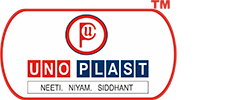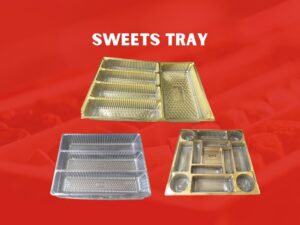The pharmaceutical industry requires a complete efficiency and safety. One crucial aspect of achieving these goals is through proper packaging. Pharmaceutical blister packaging plays a crucial role in protecting medications from external factors, ensuring their integrity, and providing convenience to both healthcare professionals and patients. This article explores the various aspects of pharmaceutical blister packaging, its benefits, best practices, and frequently asked questions (FAQs) surrounding the topic.
What is Pharmaceutical Blister Packaging?
Pharmaceutical blister packaging refers to the packaging method that involves sealing medications and other healthcare products between a plastic blister and a backing material. The blister typically consists of individual compartments, each containing a single dose or a specified quantity of the product. This packaging format offers numerous benefits in terms of product protection, tamper-evident features, ease of use, and accurate dosing
The Importance of Pharmaceutical Blister Packaging
Pharmaceutical products’ safety and effectiveness are greatly dependent on the packaging they come in. It protects the medication from various external factors such as moisture, light, air, and contaminants, which could compromise its quality and potency. Blister packaging also acts as a deterrent to tampering, lowering the possibility that tampered or fake goods may be sold.
Advantages of Pharmaceutical Blister Packaging
Enhanced Product Protection: Pharmaceutical blister packaging provides a robust barrier against moisture, light, and oxygen, preserving the stability and effectiveness of medications.
Accurate Dosing: Each individual blister compartment contains a precise quantity of the product, ensuring accurate dosing and reducing the risk of errors.
Tamper-Evident Features: Blister packs often incorporate tamper-evident seals, making it easy to identify if the product has been compromised or tampered with.
Convenience: The individual blister compartments are easy to open, making it convenient for patients, especially those with limited dexterity or impaired vision.
Portability: Because blister packs are small and lightweight, they are perfect for use while travelling or on the go.
Compliance: The clear visibility of medications in blister packaging helps patients adhere to their prescribed regimen, improving medication compliance and treatment outcomes.
Materials Used in Pharmaceutical Blister Packaging
Pharmaceutical blister packaging consists of two primary components: the plastic blister and the backing material. PVC , PET or HIPS are majorly used for blister packaging manufacturing, depending on client’s requirements. These materials offer excellent moisture and oxygen barrier properties. The backing material, commonly known as the lidding material, is usually made of aluminum foil or other heat-sealable materials that provide additional protection and maintain product integrity.
Design Considerations for Pharmaceutical Blister Packaging
The design of pharmaceutical blister packaging should consider several factors to ensure optimal functionality and user-friendliness. These include:
Compatibility: The blister material should be compatible with the specific medication to prevent interactions that could compromise the product’s stability.
Patient Safety: Blister packs should have smooth edges to prevent accidental cuts or injuries during handling.
Product Visibility: Clear visibility of the product helps patients verify the medication and dosage, reducing the risk of administration errors.
Labeling and Branding: Proper labeling and branding on the blister packaging provide essential information, such as dosage instructions, expiration date, and manufacturer details.
Child Resistance: Special considerations must be made to incorporate child-resistant features to prevent accidental ingestion by children.
Ensuring Child Resistance with Pharmaceutical Blister Packaging
Child-resistant blister packaging is crucial for medications that pose a risk if accidentally ingested by children. These packaging solutions often include features such as blister designs that are difficult for small children to open, or the addition of child-resistant blister cards or blister packs with child-resistant locks. Ensuring child resistance helps protect children from accidental exposure to potentially harmful medications.
Compliance Packaging and Pharmaceutical Blister Packaging
Compliance packaging, also known as adherence packaging or unit-dose packaging, involves organizing medications in a way that simplifies adherence to prescribed regimens. Pharmaceutical blister packaging is an excellent example of compliance packaging as it offers individual compartments that can be easily tracked and managed. This format helps patients stay organized, follow their medication schedules, and avoid missing doses.
Pharmaceutical Blister Packaging vs. Other Packaging Methods
Pharmaceutical blister packaging offers several advantages compared to other packaging methods commonly used in the pharmaceutical industry. Let’s compare it with two widely used alternatives:
Bottles: While bottles provide a larger storage capacity, they are often less convenient for patients, especially when precise dosing is required. Blister packaging, on the other hand, offers accurate dosing and better portability.
Pouches: Pouch packaging is commonly used for medications taken over a specified duration, such as a week or a month. However, pouches may not provide the same level of individual product protection and tamper-evident features as pharmaceutical blister packaging.
Quality Assurance and Pharmaceutical Blister Packaging
Ensuring quality throughout the entire production and packaging process is essential for pharmaceutical blister packaging. Stringent quality assurance measures are implemented to maintain the integrity and safety of the packaged medications. This includes adherence to Good Manufacturing Practices (GMP), quality control inspections, and ongoing monitoring of the packaging materials’ performance.
The Role of Technology in Pharmaceutical Blister Packaging
Technological advancements have significantly contributed to the development of pharmaceutical blister packaging. Automated packaging machines can efficiently produce blister packs at high speeds while maintaining accuracy and consistency. Vision inspection systems and machine learning algorithms help detect defects, verify proper sealing, and ensure accurate placement of medications within each blister compartment. These techniques simplify packing procedures, boost productivity, and raise product quality.
Sustainability in Pharmaceutical Blister Packaging
The pharmaceutical industry is increasingly focused on adopting sustainable practices, including eco-friendly packaging solutions. In the case of pharmaceutical blister packaging, efforts are being made to develop more environmentally friendly materials and improve recyclability. To reduce the environmental impact of packaging waste, reusable materials are used to produce these blisters.
Common Challenges in Pharmaceutical Blister Packaging
While pharmaceutical blister packaging offers numerous benefits, it also presents certain challenges. Some common challenges include:
Medication Stability: Certain medications may be sensitive to moisture, light, or oxygen, requiring specialized barrier properties in the blister packaging to maintain their stability.
Compatibility Issues: Some medications may interact with the materials used in blister packaging, leading to degradation or altered efficacy. Careful consideration of compatibility is necessary during the packaging design phase.
Cost: Pharmaceutical blister packaging can be more expensive than other packaging methods, primarily due to the materials and specialized equipment required. Cost considerations should be balanced with the benefits and requirements of the specific medication.
Customization: Packaging requirements may vary for different medications, such as varying blister sizes or unique shapes. Designing custom blister packaging for each medication can be time-consuming and costly.
Regulatory Compliance: Meeting regulatory standards and guidelines for pharmaceutical blister packaging, such as child-resistant features and labeling requirements, can present challenges and require careful adherence.
Innovations in Pharmaceutical Blister Packaging
The field of pharmaceutical blister packaging continues to evolve, driven by innovation and technological advancements. Some notable innovations include:
Smart Blister Packaging: Integration of electronic components and sensors into blister packaging, enabling features such as medication reminders, adherence tracking, and temperature monitoring.
Intelligent Opening Systems: Development of user-friendly opening systems that facilitate easy access to medications while maintaining child resistance.
Enhanced Barrier Properties: Advancements in materials and coating technologies to improve barrier properties, ensuring optimal protection against moisture, oxygen, and light.
Interactive Labeling: Integration of interactive elements on blister packaging, such as QR codes or augmented reality, providing patients with access to additional information or digital support resources.
Pharmaceutical blister packaging plays a crucial role in ensuring the safety, integrity, and convenience of pharmaceutical products. Its numerous advantages, including enhanced product protection, accurate dosing, and tamper-evident features, make it a popular choice in the industry. As innovations continue to emerge, pharmaceutical blister packaging is expected to evolve, incorporating smart technologies and sustainable materials. By adhering to regulatory standards and addressing common challenges, the pharmaceutical industry can further optimize pharmaceutical blister packaging for the benefit of patients and healthcare professionals.
Follow the link to explore our pharmaceutical blister packaging range




5 Responses
Nice Information, keep sharing knowledgeable articles like this.
This article is a gem! It’s evident that the writer put a lot of effort into crafting well-structured and cohesive content. Thank your author.
Your are welcome sir!
This article is a breath of fresh air. It not only highlights the importance of Pharmaceutical blister but also offers practical tips on how to use it for packaging.
Thank you for your valuable comment.